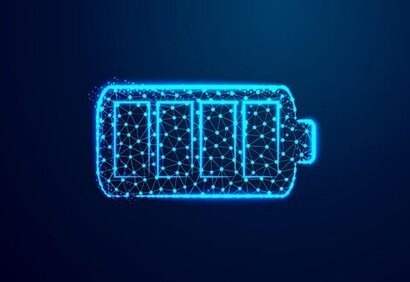
Long-term natural resource scarcity is an impediment to achieving the goal of clean and sustainable energy storage and production, essential to meet the growing demand for energy. However, advanced materials science and engineering are on the cutting edge of creating viable solutions to complex energy problems. Currently, researchers from the World Universities Network are aiming to develop unique non-toxic electrode materials for high-energy-density rechargeable batteries.
There are limited natural resources in the world and they are getting depleted at fast rates. The use of fossil fuels further stresses the environment by emitting CO2, which is the main cause of global warming and environmental pollution. Therefore, the supply of alternative green renewable energy needs to be a top priority globally. Simultaneously, energy needs to be stored and transferred efficiently to harness the full benefits of renewable energy systems.
However, most large-scale energy storage devices use toxic and expensive transition metals as their electrode materials. For sustainable grid-scale energy storage, there is a perpetual need for abundant, low cost, and non-toxic electrodes.
“The majority of materials used in today’s commercially-available lithium-ion batteries are still based on toxic metals such as cobalt and nickel, which are known to be carcinogenic” said Professor Watchareeya Kaveevivitchai of National Cheng Kung University (NCKU), a prominent researcher with the Asia Sustainable Development Goals (SDGs) Group project. “Overexposure to these metals can cause irritation and allergies and may even affect the body’s internal organs. Furthermore, their availability is another concern. For example, cobalt is rare and costly, and is therefore difficult to procure for mass production.”
To solve this problem, researchers led by Professor Kaveevivitchai are designing and developing advanced functional materials as alternatives to the toxic electrode materials traditionally used in energy storage devices. The team, which comprises Professor Teng-Hao Chen from NCKU, Dr Huan Doan from the University of Bristol, Professor Wei Gao, Dr. Shanghai Wei and Professor Mohammed Farid from the University of Auckland, has concentrated its efforts on three distinct but related areas to achieve this objective:
Development of conductive electrode materials containing very low amounts of toxic metals
Synthesis of polymeric porous materials based on abundant and environment-friendly components as battery electrodes
Design of ionic-conductor functional materials as solid-state electrolytes for improved electrochemical performance of the energy storage devices.
The complex nanostructures of these materials make them a superior choice over the conventional transition-metal-based compounds currently in use. Additionally, these new materials are abundant, inexpensive, and more environmentally friendly. They also provide attractive specific capacities. The organic materials developed by the team, for instance, offer a high energy density with good rate capability.
The team’s novel creation - hexaazatrianthranylene (HATA) embedded quinone (HATAQ) - is an organic small electron-acceptor-molecule. By introducing conjugated quinone moieties into the electron-deficient hexaazatriphenylene-derivative core, HATAQ, with highly extended π-conjugation, can yield extra-high capacity for metal-ion storage.
“Organic electrode materials possess many advantages, such as low cost and environmental friendliness” added Professor Kaveevivitchai. “They also contain a large number of redox active sites capable of undergoing a multi-electron-transfer process at a redox potential, which, if properly fine-tuned, can lead to a high energy density.”
The team has reported the findings of their work in over 20 publications since July of last year. More is yet to come. In addition, now, with the lifting of the COVID-19-related travel restrictions, the team members are looking for more productive engagement with research collaborators across borders.
For additional information:

